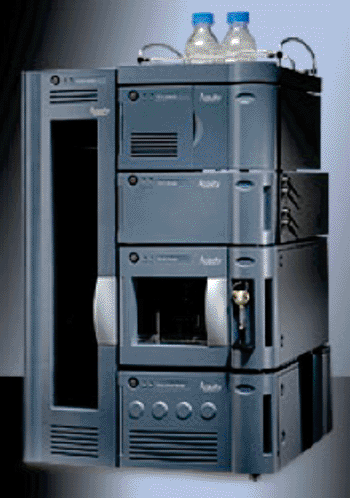Metabolic Biomarker Identified for Diabetes Risk
By LabMedica International staff writers
Posted on 07 Oct 2013
Type 2 diabetes (T2D) is the most common form of diabetes and is associated with many complications, however, many individuals are unaware that they are at risk and do not change their lifestyle in time to avoid disease. Posted on 07 Oct 2013
The metabolite 2-aminoadipic acid (2-AAA) has been identified as a biomarker for T2D diabetes risk and individuals with increased levels of 2-AAA had a much greater risk of developing diabetes than individuals with lower 2-AAA levels.

Image: The ACQUITY UPLC System for ultra-performance liquid chromatography (Photo courtesy of Waters).
An international team of scientists collaborating with those at Massachusetts General Hospital (Boston, MA, USA) took plasma samples from two cohorts, and metabolite profiling was performed on samples from 1,937 attendees who were free of diabetes at baseline of whom 376 propensity-matched cases and controls and 1,561 randomly selected individuals.
The team employed methodology for profiling polar plasma metabolites using hydrophilic interaction (HILIC) and liquid chromatography-mass spectrometry (LC-MS). The data was acquired using ultra-performance liquid chromatography technology on an ACQUITY UPLC (Waters; Milford, MA, USA) coupled to a 5500 QTRAP triple quadrupole mass spectrometer (AB SCIEX; Redwood City, CA, USA).
Individuals with 2-AAA concentrations in the top quartile had greater than a four-fold risk of developing diabetes. Levels of 2-AAA were not well correlated with other metabolite biomarkers of diabetes, such as branched chain amino acids and aromatic amino acids, suggesting they reflect a distinct pathophysiological pathway.
The authors concluded that the application of a new metabolite profiling technique highlighting intermediary metabolites identified 2-AAA as a novel predictor of the development of diabetes. The relative risk associated with elevated 2-AAA concentrations was not attenuated by adjustment for standard biochemical measures of insulin resistance.
This investigation provides motivation to test whether plasma measurements of this molecule might help identify candidates for interventions to reduce diabetes risk and to elucidate the precise molecular pathways by which 2-AAA modulates insulin secretion, glucose homeostasis, and susceptibility to diabetes. The study was published on September 16, 2013, in the Journal of Clinical Investigation.
Related Links:
Massachusetts General Hospital
Waters
AB SCIEX














